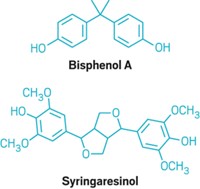Advertisement
Grab your lab coat. Let's get started
Welcome!
Welcome!
Create an account below to get 6 C&EN articles per month, receive newsletters and more - all free.
It seems this is your first time logging in online. Please enter the following information to continue.
As an ACS member you automatically get access to this site. All we need is few more details to create your reading experience.
Not you? Sign in with a different account.
Not you? Sign in with a different account.
ERROR 1
ERROR 1
ERROR 2
ERROR 2
ERROR 2
ERROR 2
ERROR 2
Password and Confirm password must match.
If you have an ACS member number, please enter it here so we can link this account to your membership. (optional)
ERROR 2
ACS values your privacy. By submitting your information, you are gaining access to C&EN and subscribing to our weekly newsletter. We use the information you provide to make your reading experience better, and we will never sell your data to third party members.
Synthesis
Chemists Build Biobased Resins From Vegetable Oil
by Stephen K. Ritter
September 5, 2011
| A version of this story appeared in
Volume 89, Issue 36
Drawing on vegetable oil as a raw material, researchers in France have demonstrated a method for making biobased epoxy resins. The motivation behind the work of Mylène Stemmelen, Vincent Lapinte, and coworkers at the University of Montpellier II is to replace petroleum-derived starting materials and sidestep the use of bisphenol A. BPA is the primary constituent of most epoxies, including those used to line the inside of food and drink cans and in engineered wood products. But the chemical is under scrutiny for its potentially toxic endocrine-disrupting effects (C&EN, June 6, page 13). Chemists have made epoxies partially from vegetable oil before, typically using epoxidized linseed oil (ELO) because it’s already FDA approved for food applications. Those epoxies require an amine curing agent, however, and rely on off-the-shelf petroleum-derived alkylamines. The French researchers instead paired ELO with a polyamine they made from cysteamine and grape-seed oil, Stemmelen reported. They then used heat to cross-link ELO with the amine to form veggie epoxy resins. Stemmelen noted that the thermomechanical properties of the new epoxies made so far aren’t stellar, but ongoing work to modify the polyamine should lead to improved versions.





Join the conversation
Contact the reporter
Submit a Letter to the Editor for publication
Engage with us on Twitter